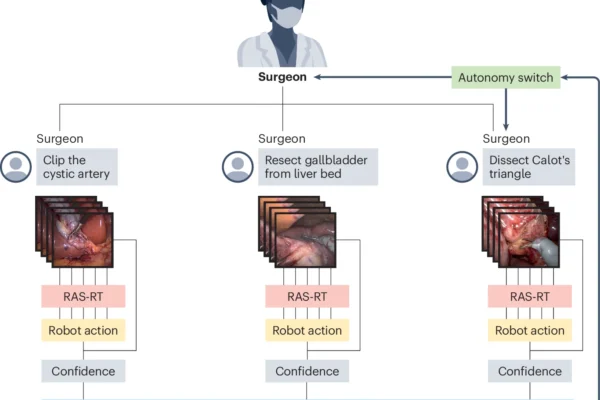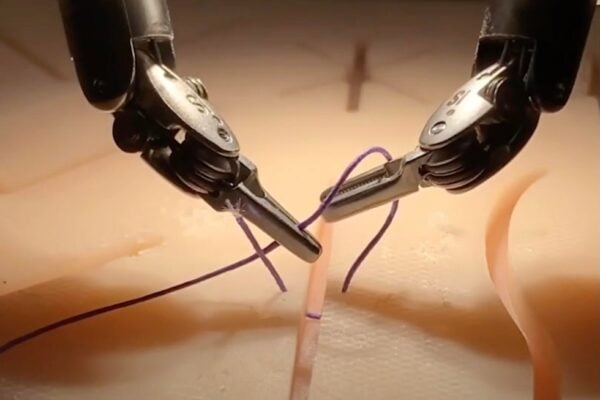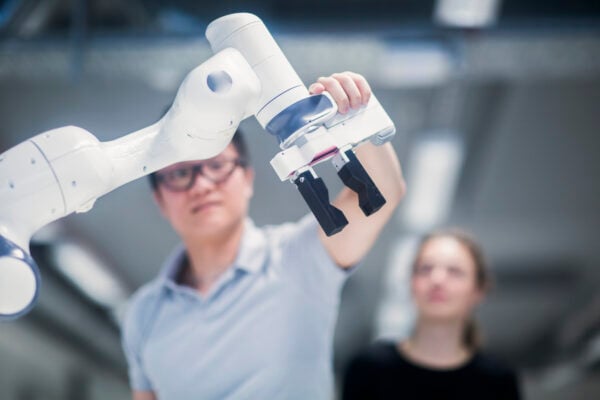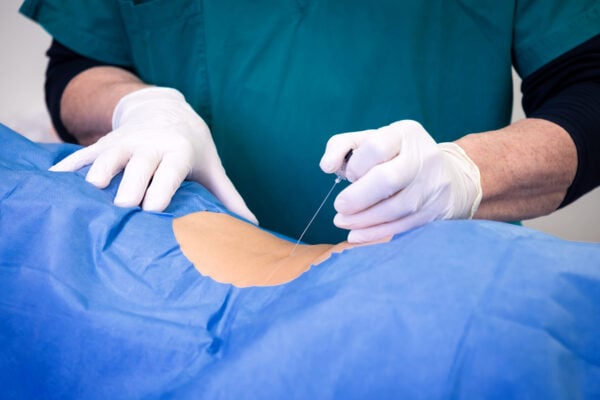In: Robotics, Augmented Reality, and Devices

Steering autism research with sensory science
- June 26, 2025
- Robotics, Augmented Reality, and Devices
Johns Hopkins University and Kennedy Krieger researchers use a new racing game to shed light on how children with autism learn.

Beyond assistants: How AI could enable surgical robots to think and act autonomously
- December 12, 2024
- Robotics, Augmented Reality, and Devices
Multimodal training promises smarter, safer robotic surgery.

Robot that watched surgery videos performs with skill of human doctor
- December 5, 2024
- Machine Learning and Artificial IntelligenceRobotics, Augmented Reality, and Devices
A breakthrough training system utilizing imitation learning opens a “new frontier” in medical robotics.

AI brings autonomous procedures closer, but surgeons still key
- November 15, 2024
- Center NewsMachine Learning and Artificial IntelligenceRobotics, Augmented Reality, and Devices
A Johns Hopkins briefing explores the evolving role of robotics and artificial intelligence in surgery.

Breaking the remote robotics skill barrier
- November 12, 2024
- Robotics, Augmented Reality, and DevicesStudent Stories
A new JHU targeted training approach can make up for a lack of natural spatial ability in robot teleoperation tasks.

New wearable augmented reality device could improve accuracy of spinal tap procedures
- October 3, 2024
- Medical ImagingRobotics, Augmented Reality, and Devices
Johns Hopkins researchers partnered with a local imaging device company to develop an efficient, real-time lumbar puncture guidance system.